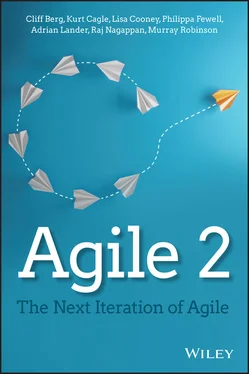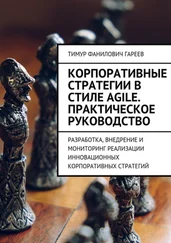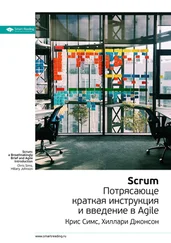223 219
224 220
225 221
226 222
227 223
228 224
229 225
230 226
231 227
232 228
233 229
234 230
235 231
236 232
237 233
238 234
239 235
240 236
241 237
242 238
243 239
244 240
245 241
246 242
247 243
248 244
249 245
250 246
251 247
252 248
253 249
254 250
255 251
256 252
257 253
258 254
259 255
260 256
261 257
262 258
263 259
264 260
265 261
266 262
267 263
268 264
269 265
270 266
271 267
272 268
273 269
274 270
275 271
276 272
277 273
278 275
279 276
280 277
281 278
282 279
283 280
284 281
285 282
286 283
287 284
288 285
289 286
290 287
291 288
292 289
293 290
294 291
295 292
296 293
297 294
298 295
299 296
300 297
301 299
302 300
303 301
304 302
305 303
306 304
307 305
308 306
309 307
310 308
311 309
312 310
313 311
314 312
315 313
316 314
317 315
318 316
319 317
320 318
321 319
322 320
323 321
324 322
325 323
326 324
327 325
328 326
329 327
330 328
331 329
332 330
333 331
334 332
335 333
336 334
337 335
338 336
339 337
340 338
341 339
342 340
343 341
344 342
345 343
346 344
347 345
348 346
349 347
350 348
351 349
352 350
353 351
354 352
355 353
356 354
357 355
358 356
359 357
360 358
361 359
362 360
363 361
364 363
365 364
366 365
367 366
368 367
369 368
370 369
371 370
372 371
373 372
374 373
375 374
376 375
377 376
378 377
379 378
380 379
381 380
382 381
383 382
384 383
385 384
386 385
387 386
388 387
389 388
390 389
391 391
392 392
393 393
394 394
395 395
396 396
397 397
398 398
399 399
400 400
401 401
402 402
403 403
404 404
405 405
406 iv
407 v
408 vi
409 vii
410 viii
411 ix
412 x
413 xi
414 406
Agile 2
The Next Iteration of Agile
Cliff Berg
Kurt Cagle
Lisa Cooney
Philippa Fewell
Adrian Lander
Raj Nagappan
Murray Robinson

You can recognize a great book by its ability to make obvious what is wrong with existing worldviews and to add new insights or nuances to change or improve this worldview. I believe Agile 2 meets these criteria easily. It is an easy read not only for those new to the subject of agility, but also for die-hard professionals who are looking for something “beyond” the basic Agile concepts that are at times dogmatic and often being misused in practice.
In this era of digital disruption and an ever-growing world full of volatility, uncertainty, complexity, and ambiguity, it becomes increasingly important for organizations to become more agile. The Agile Manifesto, originally intended in 2001 to disrupt traditional, not-too-effective software development practices, has inspired many organizations over the past decades to change their ways of working, affecting both work cultures and structures. Its popularity was boosted by a growing workforce consisting of millennials and Generation-Z professionals who demand more autonomy, ownership, and the opportunity to make meaningful impact. Over the past decade, the “Agile movement” has gained increasing momentum and also moved beyond the realm of IT.
A side effect of its success and growth was that all kinds of Agile frameworks, doctrines, and certifications popped up to standardize and monetize the discipline. The original Agile values and principles, being high-level on purpose, gave ample room for various interpretations of the core paradigms. During my career I have worked with many different Agile coaches and consultants, and I was always surprised by how much discussion and fanatic debates arose among them with regard to how to live certain Agile values or implement specific practices. This tribalism led to confusion among non-Agilists, and this hampers Agile transformations significantly. I thus see a clear need for a comprehensive Agile idea set that is both pragmatic and nuanced by nature. Enter Agile 2 .
I was happy to find out quickly that the authors do not claim to have written yet another Agile doctrine or “Bible.” Instead, they have written a pragmatic companion guide that will be useful for managers and specialists alike. It is packed with hands-on tactics and practices that can help leaders and specialists in organizations to grow to a next level of agility, while preventing cargo-cult behavior or avant le lettre implementations that often do more harm than good.
One of my key drivers for cofounding the DevOps Agile Skills Association (DASA) in 2016 was building a comprehensive view on how to create high-performance IT organizations. The popularity of DASA stems largely from the six DevOps and Agile principles that advocate continuous improvement, customer centricity, autonomous multidisciplinary teams, and product thinking. Following these principles often results in a digital and organizational transformation that typically goes far beyond choosing a standard Agile framework or adding some basic Agile rituals to the mix. To transform successfully to high-performance, organizations need a more mature take on and guidance on what it means to really “be Agile” at scale. Providing this guidance is one of this book's core differentiating features.
Over the past decade I learned firsthand as a consultant, trainer, and senior leader the importance of building the right type of leadership in the organization and creating a culture of continuous learning, experimentation, and innovation. What I like about Agile 2 is that both the importance of leadership and learning are advocated strongly. It provides many tangible ideas to reimagine an organization's leadership culture. I wish that I had this book on my nightstand five years ago. It would have helped me greatly in understanding why certain things happened—or did not happen—during the organizational transformations I was leading.
I like the fact that the authors do not intend to reinvent the wheel, but are keen on building on what is already working. Some of the key Agile values and principles are powerful to this day, but application in practice often needs some additional clarity and lots of examples. The authors nicely provide nuance to how to interpret Agile principles and values while referring to many interesting, and more recent, bodies of work. The authors hit the nail with addressing key topics that are haunting many organizations, leaders, and teams, such as how to collaborate, communicate, value both experts and generalists, and commit team capacity. They rightfully argue that how to adopt certain principles or how to interpret certain values depends on your organization's needs and its current level of maturity. Using this book as your Agile guide, you can aim and navigate your transformation in a more tailor-made way, resulting in more business value. I expect this book to be found on many nightstands in the coming years.
Читать дальше












